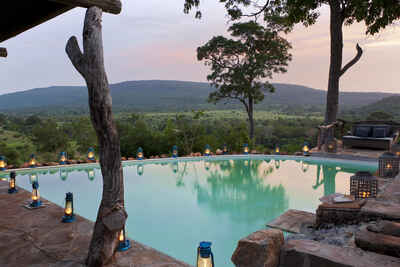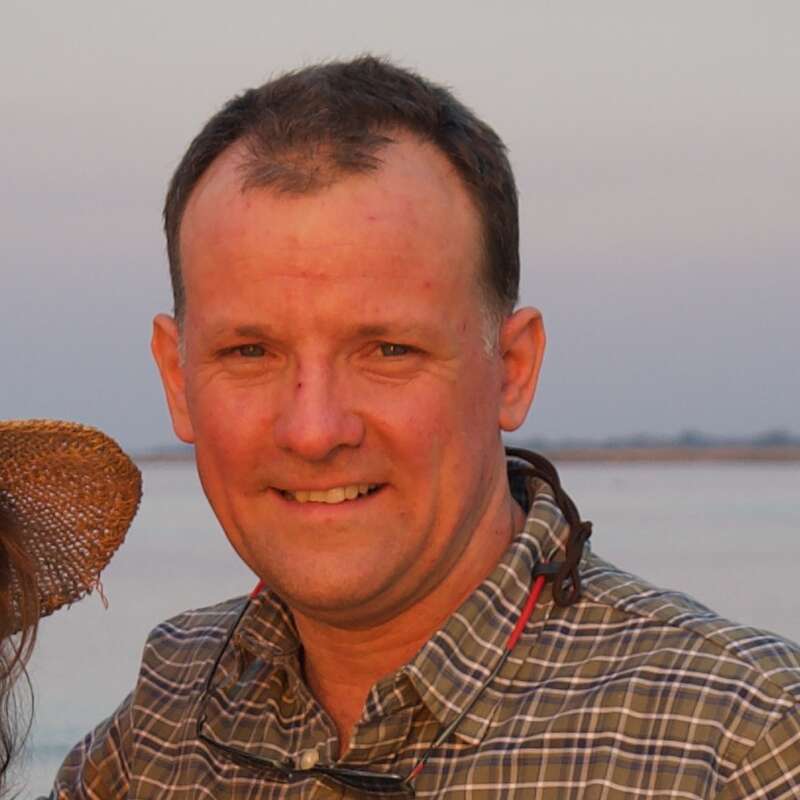About Beho Beho
Beho Beho has a unique location in the Nyerere National Park – high on a hill in an area dotted with baobab trees.
Indeed, the name Beho Beho means ‘breeze’, which is apt given its airy location. Its site was first used as early as 1972, and it’s not only one of the reserve’s first camps, but also one of the few camps in the Nyerere National Park (previously known as the Selous Game Reserve) that is set away from the river or one of the lakeshores. In 2004 the camp was rebuilt using locally sourced materials and it regularly undergoes a complete refurbishment.
Since it opened, Beho Beho has set very high standards. This is one of the very best camps we know anywhere in Africa. While it’s smart and luxurious, the welcome here is always warm and the mood is friendly, not pretentious. The food is outstanding, like dining out at a very good restaurant at every meal. Most importantly, the guiding is first-class, delivered by individuals who know their subject inside out and for the most part have perfected the art of passing it on to guests across the whole spectrum of safari experience, from first-time safari-goers to those who come back again and again. And despite these very high, self-imposed standards, Beho Beho still manages to exceed expectations. The only downsides are that it isn't on a riverbank or lakeshore (the defining appeal of many camps in Nyerere National Park) and the relatively high price tag, although this can be offset by long-stay reductions: the minimum stay in any case is 3 nights.
Our view
Since it opened, Beho Beho has set very high standards. This is one of the very best camps we know anywhere in Africa. While it’s smart and luxurious, the welcome here is always warm and the mood is friendly, not pretentious. The food is outstanding, like dining out at a very good restaurant at every meal. Most importantly, the guiding is first-class, delivered by individuals who know their subject inside out and for the most part have perfected the art of passing it on to guests across the whole spectrum of safari experience, from first-time safari-goers to those who come back again and again. And despite these very high, self-imposed standards, Beho Beho still manages to exceed expectations. The only downsides are that it isn't on a riverbank or lakeshore (the defining appeal of many camps in Nyerere National Park) and the relatively high price tag, although this can be offset by long-stay reductions: the minimum stay in any case is 3 nights.
Accommodation
7 bandas
Children
Best for 12 plus
Open
1 June to 22 March
Activities

4WD Safari

Birdwatching

Boat trip

Fishing

Guided walking safari

Private activities
Traveller reviews of Beho Beho
174 real, un-edited reviews from Expert Africa's travellers.
Arrived 17 Jan 2025, 4 nights
"Beho Beho review"
Overall rating: Excellent
Arrived 28 Oct 2024, 4 nights
"Beho Beho review"
Overall rating: Excellent
Arrived 29 Sep 2024, 4 nights
"Beho Beho review"
Overall rating: Excellent
Arrived 10 Sep 2024, 4 nights
"Beho Beho review"
Overall rating: Excellent
Arrived 17 Feb 2024, 4 nights
"Beho Beho review"
Overall rating: Excellent
Arrived 23 Oct 2023, 3 nights
"Beho Beho review"
Overall rating: Good
Arrived 21 Jul 2023, 4 nights
"Outstanding experience"
Overall rating: Excellent
Arrived 18 Jul 2023, 4 nights
"Beho Beho is a gorgeous camp"
Overall rating: Excellent
Arrived 12 Jan 2023, 4 nights
"Beho Beho review"
Overall rating: Excellent
Arrived 28 Oct 2022, 5 nights
"Beho Beho review"
Overall rating: Excellent

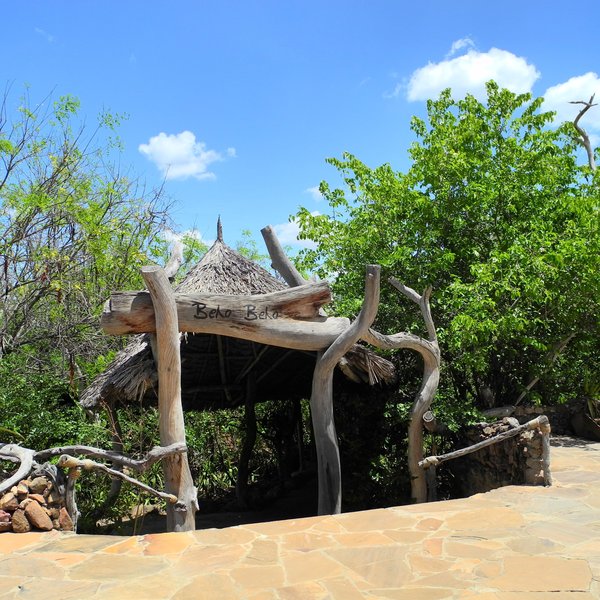
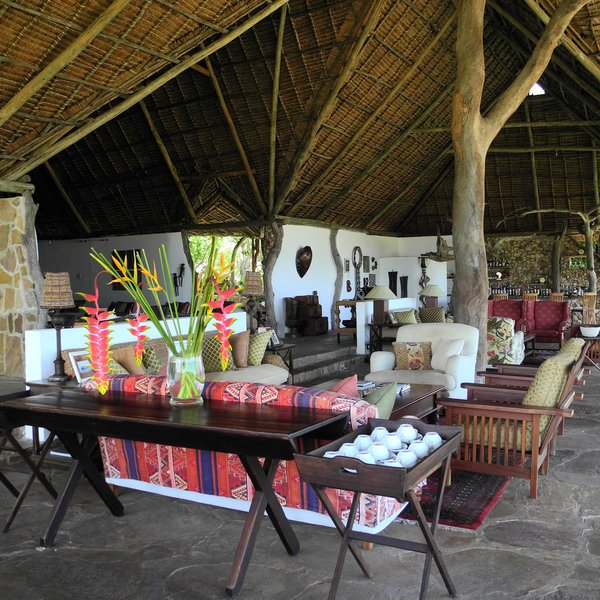









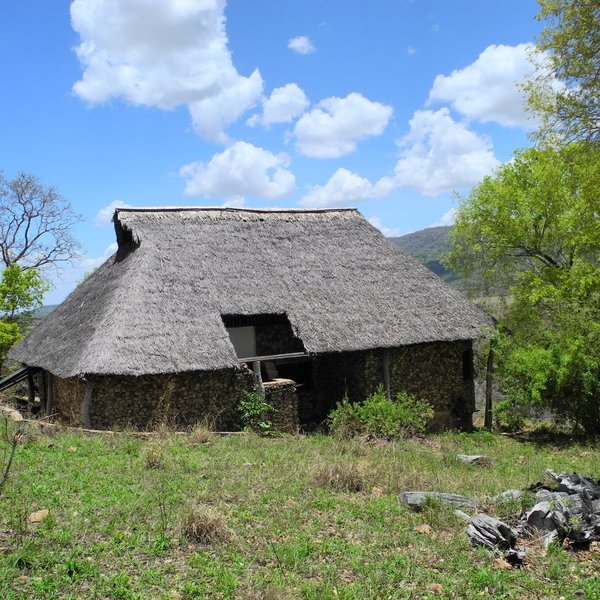


















Expert Africa's gallery
When we travel we take lots of photos ourselves to give you a real and un-edited view of the safaris. See our 79 pictures of Beho Beho to get the candid view.
View gallerySafaris visiting Beho Beho
Just ideas, we'll always tailor-make a trip for you
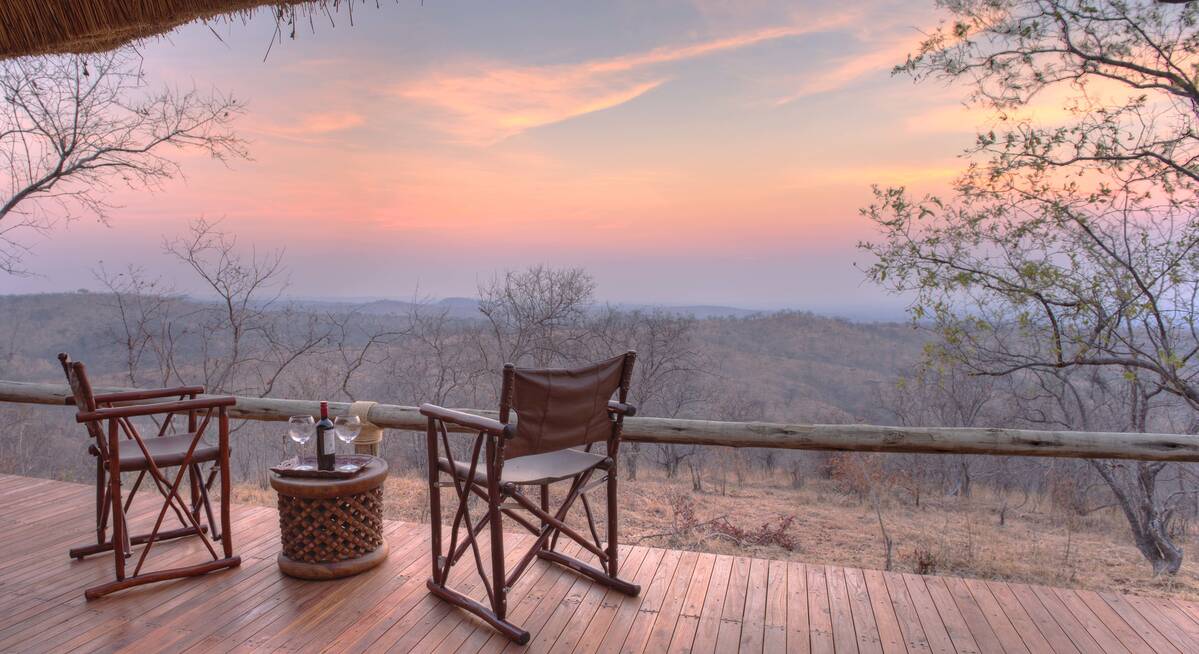

Jackal Fly-in Safari
8 days • 2 locations • 1 country
DAR ES SALAAM AIRPORT TO DAR ES SALAAM AIRPORT
Enjoy a range of activities on this luxury fly-in safari. Explore the remoter regions of Ruaha National Park and Nyerere National Park with phenomenal guides during stays at two impressively comfortable camps that remain perfectly in keeping with their surroundings.
Visiting Nyerere, Ruaha
US$10,460 - US$12,080 per person
Beho Beho: Our full report
Beho Beho has a unique location in the Nyerere National Park – high on a hill in an area dotted with baobab trees.
Indeed, the name Beho Beho means ‘breeze’, which is apt given its airy location. Its site was first used as early as 1972, and it’s not only one of the reserve’s first camps, but also one of the few camps in the Nyerere National Park (previously known as the Selous Game Reserve) that is set away from the river or one of the lakeshores. In 2004 the camp was rebuilt using locally sourced materials and it regularly undergoes a complete refurbishment.
The central lounge and bar area at Beho Beho has a mix of comfortable sofas, Persian rugs from the owners’ family home and African carvings. The décor also includes some classic pieces of furniture from Europe. Coffee-table books and family photos are dotted on the small tables, lending the feeling of a slightly eccentric family home. The whole area is open sided with fantastic views across the valley, and down to a small artificial waterhole on the hillside, that’s floodlit after dark when it often attracts interesting mammalian drinkers. Near the bar is a well stocked library with old maps and prints, and a variety of historical artefacts from the nearby World War 1 battlefield. Behind the lounge area you will also find a full-size slate-bedded billiard table.
Up the slope a little, the swimming pool and its sun deck also command a spectacular view across the valley – and you can often spot game from the pool’s terrace. There are a few comfortable loungers here, as well as a small thatched seating area, which is great for relaxing out of the heat of the day.
There are just seven stone bandas (rooms) at Beho Beho, all of them permanent, thatched and open at one side to the amazing views. The stone used in their construction was sourced locally, and the wood for the door frames, bed frames and wall lights was sourced from dead wood found in the park.
Designed to feel homely, these bandas are also extremely spacious and comfortable. The furnishings include canopied beds under mosquito nets, large comfy armchairs and wonderful old writing desks. Each has an area slightly separated by a step, which is part lounge, part veranda, and the entire front is open to the view. As a new addition for 2019 are the banda's private plunge pools, overlooking the below vista and the visiting wildlife. We had a friendly bushbuck walk past several times as we enjoyed the cool water in the midday heat. A separate anteroom provides storage for clothes and luggage, and each of the rooms has a ceiling fan and 24-hour electricity (three-pin UK-style plugs).
Large en-suite bathrooms feature great outdoor showers, flush loos and dual washbasins set into a plinth decorated with pebbles gathered from the Rufiji River. The bathrooms are some of the best equipped we have encountered in any safari camp, with shaving mirrors, retractable washing line and pumice stones included among the thoughtful extras. Toiletries (by Charlotte Rhys), hairdryers, light cotton dressing gowns and slippers add a touch of indulgent luxury.
We have visited Beho Beho on numerous occasions since 2004 and each visit brings something new. In 2019 we took a good look around the now well established Bailey’s Banda private house. With its pool and private dining arrangements, we think it’s great for larger groups, or mixed-generation families who want to focus on themselves, but we like the main lodge bandas better than the rooms at Bailey’s.
Despite its many comforts, Beho Beho has become the top camp in the Nyerere National Park primarily due to the superb quality of its guiding. The guides here are consistently excellent, with a breadth of knowledge that is hard to match – and a drive or walk with a guide from Beho Beho is a truly fascinating experience. It’s important to understand the principal of how they work as a team, too: the guides cannot under any circumstances be booked privately, even if you have a favourite (they are all brilliant in any case) nor can you hire a private vehicle even if you were willing to pay. This is just not the ethos of Beho Beho. The services of the guides are strictly shared among all the guests in camp, and over the course of three or four days you are likely to experience activities with each of them, and often more than once. This requires the guides to talk to each other, and recount their experiences with their guests to avoid repetition: you don’t need to hear about the social life of the ground hornbill, the sex life of the spotted hyena, or the eating habits of the civet, fascinating as these are, more than once. Most of Beho Beho’s guides have FGASA training (southern Africa’s prestigious Field Guides Association), and we have found the guiding here to be truly excellent, and the rotation system to work seamlessly.
Activities out of Beho Beho include very competent 4WD game drives in the western region of Nyerere National Park and full-day excursions to Lake Tagalala, using the lodge’s small motor boat moored there to explore the lake’s birdlife and view crocs and hippos. But the lodge’s speciality is walking safaris. On a typical game walk, you’ll set off at around 6am when it’s lovely and cool, and stay out as long as your enthusiasm lasts. It’s unusual to find a camp where the activities are so flexible and last as long. On one of our recent visits to Beho Beho, our morning walking safari lasted right through until lunch time – in fact a slightly late lunch – with a very civilised bush breakfast set up for us along the way to keep us going. Close encounters with the local megafauna are quite common on these excursions, and the pre-walk briefing is a serious matter.
Generally, though, guests return from their first activity in the late morning, in time for brunch. Afternoon activities then depart at around 4pm, and return after a sundowner drink in the bush. Another option is to take a trip to the hippo pool, where you can happily watch dozens of hippos splashing about in the mud – for as long as your nose can stand it.
Close to Beho Beho, there are also some sites of historical and geographical interest which are sometimes visited as part of an activity. Be sure to ask to see these if you are interested. They include some World War 1 trenches where you can still find scattered artefacts, the grave of Frederick Courtney Selous – after whom the park was originally named before, and who was killed in action here – and some lovely hot springs set in a patch of riparian woodland where you might fancy a swim. On a spur of the hillside opposite the lodge an ancient burial site has been revealed and over the years human skeletons have began to be exposed.
There is now also the option to spend a night in Beho Beho’s rather luxurious Treehouse. The Beho Beho team built it by hand, out of naturally sourced materials, creating a stylish platform in the trees, complete with a bathroom. It makes for an exclusive experience for guests who want to enjoy a night in the tree tops – though at a fairly hefty supplementary cost.
Activities
4WD Safari
Birdwatching
Boat trip
Fishing
Guided walking safari
Private activities
Families & children
- Attitude towards children
- Property’s age restrictions
- Children under 12 years are not allowed to stay here.
- Special activities & services
- There are no special services or activities for children at Beho Beho.
- Equipment
- There is no special equipment for children at Beho Beho.
- Generally recommended for children
- Only for children over 12 who are mature and responsible.
- Notes
- Beho Beho considers that children staying at the camp are very much the responsibility of their parents. Parents should also be aware that this camp is not fenced and wildlife can pass through at any time – children cannot be left unaccompanied.
Food & drink
- Usual board basis
- Full Board & Activities
- Food quality
- Whenever we have stayed at Beho Beho, most recently in 2019, the food has been outstanding. There's a real variety on offer, with dishes deliciously prepared and beautifully presented. A very sociable atmosphere adds to this – with guests and guides sitting around one large table – perhaps helped because the team there clearly think about their hosting, and it shows. Dinner runs like a very well-organised dinner-party, with excellent service and dishes which have flair and originality, making the food one of Beho Beho's outstanding features.
Breakfast at Beho Beho is usually fruit, fresh bread and a full cooked breakfast with eggs of your choice, and a wide choice of spreads. The egg and bacon muffins are a bit special. On our last visit this was set up by the lake and we enjoyed a huge breakfast after a wonderful boat trip.
Lunch is served at around 12pm and comprises a variety of hot and cold dishes such as fresh salads, Swahili dishes and light curries. On our last visit, lunch included a choice of quiche, spare ribs, garlic tiger prawns, halloumi salad, and homemade cheese and sundried tomato focaccia bread followed by cinnamon tortillas and fruit salad.
Dinner is served in a different location each night and is a varied three-course menu. Dinner on one of our visits included spinach and feta ravioli in a tomato sauce as a starter, fillet steak with peppercorn sauce, potato wedges, and vegetables for main course, and yogurt panna cotta with apples poached in red wine for dessert. More recently we were wowed with a truly divine (for meat-eaters, at least) lamb shank, gently stewed to perfection. On one evening there was a specoa; Swahili night set up in a nearby boma lit with stome lanterns. It was a fantastic experience and a wonderful to a perfect stay. - Dining style
- Group Meals
- Dining locations
- Indoor and Outdoor Dining
- Further dining info, including room service
- Group meals in various locations are the thing at Beho Beho. There is little option for private dining and an informal, sociable dinner party atmosphere that includes guests, guides and managers, is encouraged throughout your stay.
- Drinks included
- All house drinks are included at no extra charge at Beho Beho, though Champagne is not available.
Our travellers’ wildlife sightings from Beho Beho
Since mid-2018, many of our travellers who stayed at Beho Beho have kindly recorded their wildlife sightings and shared them with us. The results are below. Click an animal to see more, and here to see more on our methodology.

100% success

100% success

100% success

100% success

100% success

96% success

92% success

88% success

70% success

52% success

29% success

27% success

0% success

0% success

0% success
Getting there
- Location
- Nyerere National Park, Tanzania
- Ideal length of stay
- You can visit for 3-4 nights, but the range of activities at Beho Beho means that 5 to 7 nights also works well – especially if a night in the tree house is included.
- Directions
- It’s a 45-minute flight from Dar es Salaam into the Nyerere National Park, where you land at Beho Beho's own airstrip right next to the camp, dubbed 'Beho Beho International'.
- Accessible by
- Fly-and-Transfer
Special interests
- Solo safaris
- Beho Beho is a very sociable camp: it’s like visiting a family home. You are warmly welcomed by the team and very well looked after. There is no single supplement here.
- See ideas for Solo safaris in Tanzania
- Honeymoons
- Beho Beho, with its huge luxurious open rooms, romantic canopied double beds, general excellent standards, and attentive service, make it a perfect choice for a Tanzania honeymoon. For a special addition to your stay, spend a night under the stars, in the Beho Beho treehouse.
- See ideas for Honeymoons in Tanzania
- Birdwatching safaris
- Nyerere National Park is a good park for to visit on a birdwatching trip to Tanzania. During our visit in 2019 we saw white-fronted bee-eater, a beautiful hoopoe, a bat hawk, crested guinea fowl, a Verreaux eagle owl and a vibrant red bishop.
- See ideas for Birdwatching safaris in Tanzania
- Walking safaris
- Walking safaris at Beho Beho are some of the best you will find in Tanzania. With extremely knowledgeable, well-trained guides, and good wildlife viewing in Nyerere National Park. The high guiding standards translate into visitors gaining more of an insight into the park.
- See ideas for Walking safaris in Tanzania
- Wildlife safaris
- The wildlife in this area of Nyerere National Park is usually good, but can be a little elusive at times. There is a permanent population of lions and frequent sightings of more transient wild dogs. Among much other game, there’s usually an abundance of giraffe, wildebeest and the odd buffalo.
- See ideas for Wildlife safaris in Tanzania
- Wellbeing retreats
- With the laid-back pace at Beho Beho and the private plunge pools in the rooms this is an ideal lodge for relaxation and wellbeing.
- See ideas for Wellbeing retreats in Tanzania
- Luxury safaris
- Staying at Beho Beho is a peerless way to spend a few nights. Spacious open-fronted bandas ooze low-key style with sumptuous four-poster beds, antique safari treasures and classic furniture. But the real luxuries here are a very thoughtful service, superb food and expert guiding.
- See ideas for Luxury safaris in Tanzania
Communications
- Power supply notes
- There are UK-style 3-pin plugs in every room.
- Communications
- There is wifi in all the bandas, and a guest computer in the study.
- TV & radio
- There is no TV for guests, though the staff will share their TV for important matches and the like. The exclusive Bailey's Banda has TV.
- Water supply
- Borehole
- Water supply notes
- There is hot water in every room, heated by solar geysers.
Health & safety
- Malarial protection recommended
- Yes
- Medical care
- There is a first-aid kit on site for minor illnesses and injuries. For more serious cases, all guests at Beho Beho are registered with a company which can do airlifts if necessary. Two walking guides have had advanced first-aid training. All the managers and guides have first-aid training.
- Dangerous animals
- High Risk
- Security measures
- There are guards around the camp and at night you will be escorted to and from your room.
- Fire safety
- There are fire extinguishers in all of the rooms and communal areas. There is an emergency horn in each of the bandas.
Useful info
- Disabled access
- On Request
- Laundry facilities
- There is a free laundry service included, although, as in many camps, underwear is not accepted. Washing powder is supplied in the bathrooms.
- Money
- There is no currency exchange at Beho Beho.
- Accepted payment on location
- There are no extras to pay at Beho Beho, but tips are best made in either US dollars or Tanzanian shillings.
Plan and book your trip with Expert Africa
All of our trips are tailor-made, so we'll always adapt them to suit you. Talk to an Expert and let us plan and arrange your perfect trip.

Talk to an Expert
Call or email us now! We’ll match you with the Specialist in our team who is best suited to help you. Then together we can start planning your trip.

Set up your itinerary
Based on our experience and your ideas, your specialist will create a detailed, costed itinerary. We’ll refine it together, until we have a trip that you’re perfectly happy with.

Prepare for your trip
The same Specialist will make the seamless arrangements for your trip, send you detailed travel documents, and be available to answer any questions before you depart.

Travel with peace of mind
After you set off, you’ll be cared for by our partners in Africa, most of whom have worked with Expert Africa for decades. And if you ever need us urgently, we’re available 24/7.

When you return
We love to learn about your trip, and so will always be grateful if you’ve the time to give feedback to your Specialist when you return.
Beho Beho's location
Look closer at the environment and surroundings of Beho Beho.
Other lodges in Nyerere National Park
Alternative places to stay in this same area.
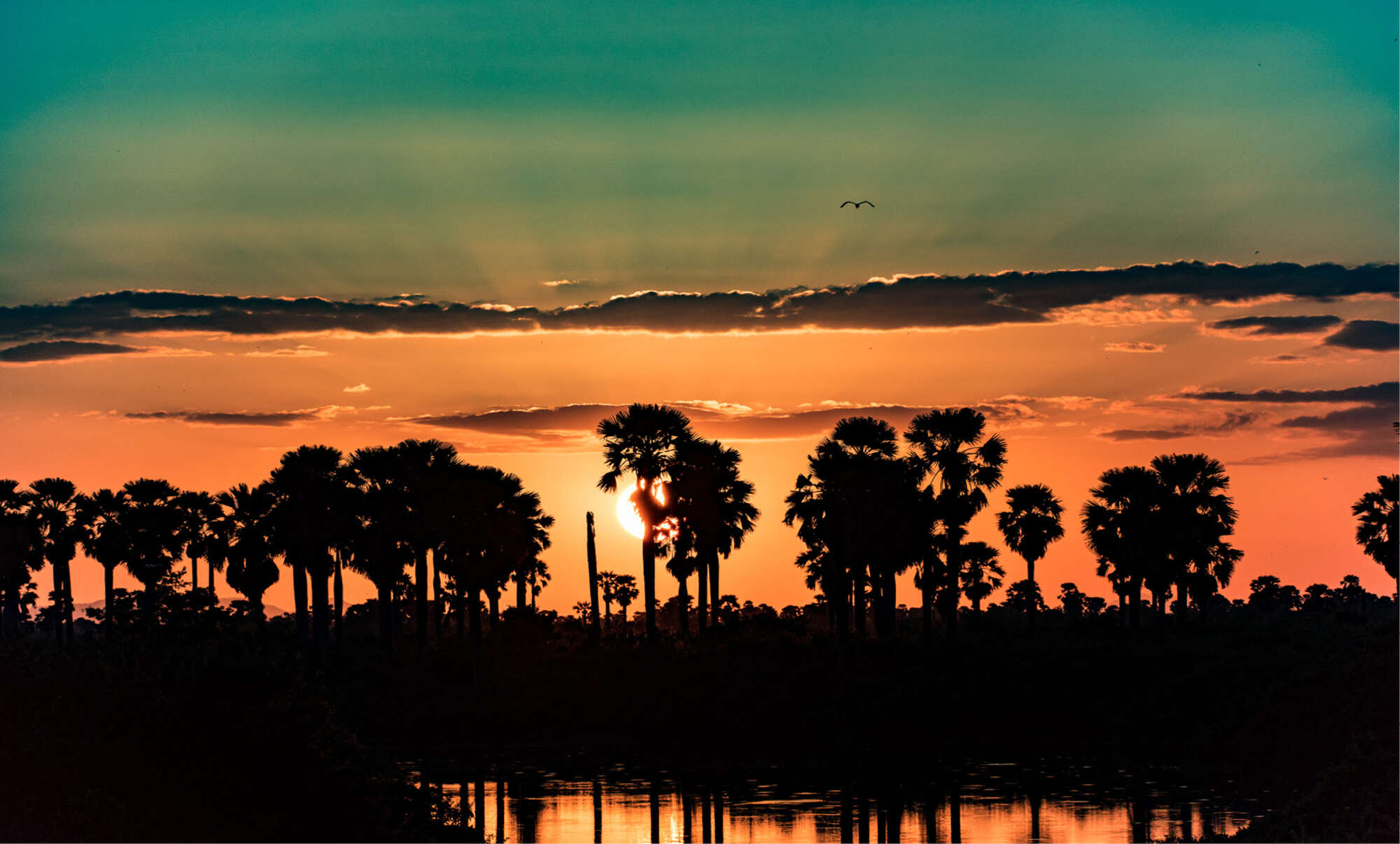
Impala Camp
Impala Camp is a comfortable, excellent-value camp with colourful tented rooms raised on platforms, good guiding and tasty food.
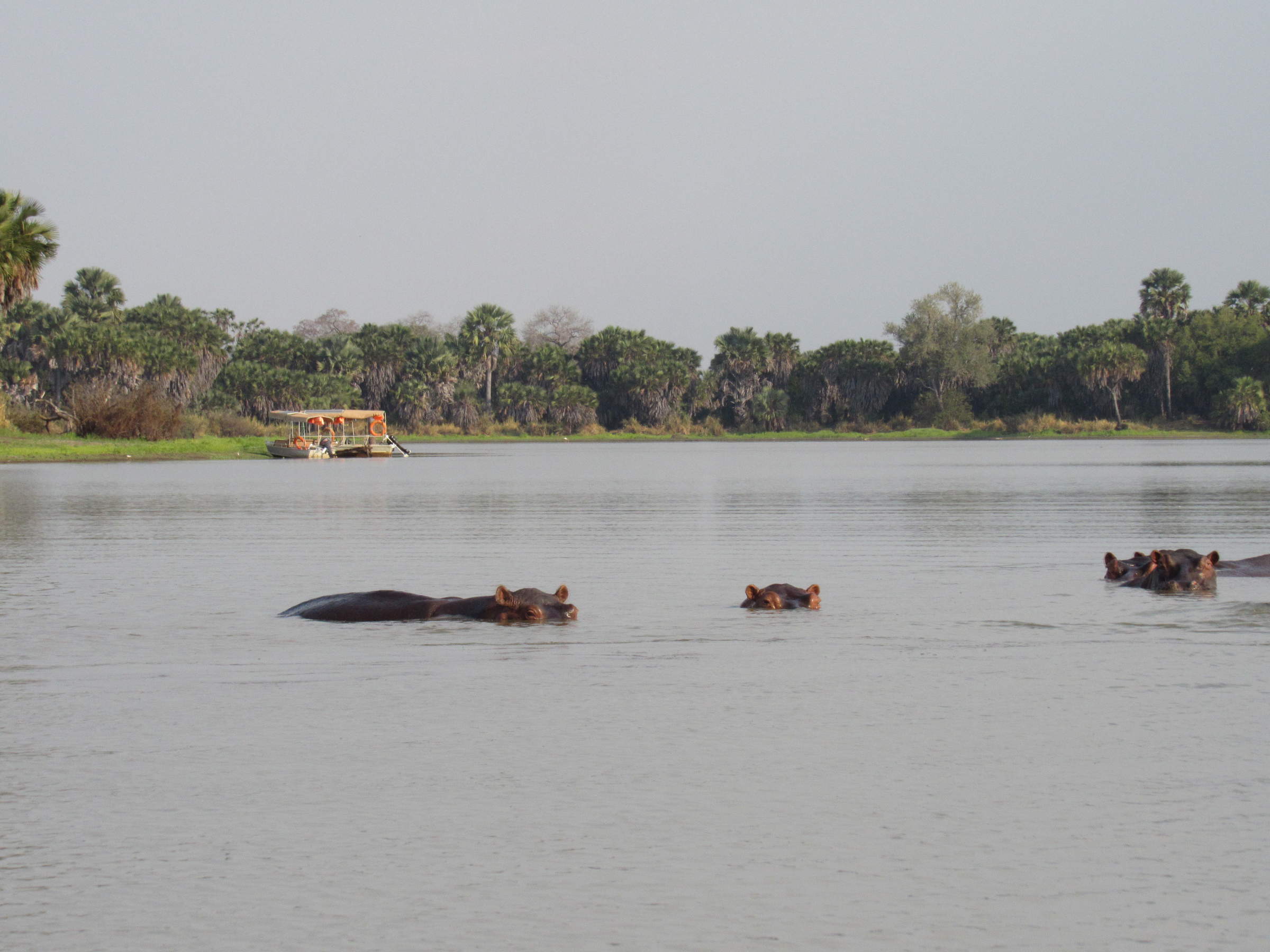
Lake Manze Camp
Lake Manze Camp is a rustic, lakeside bushcamp in Nyerere National Park that offers a great wilderness experience and doesn’t cost the earth.
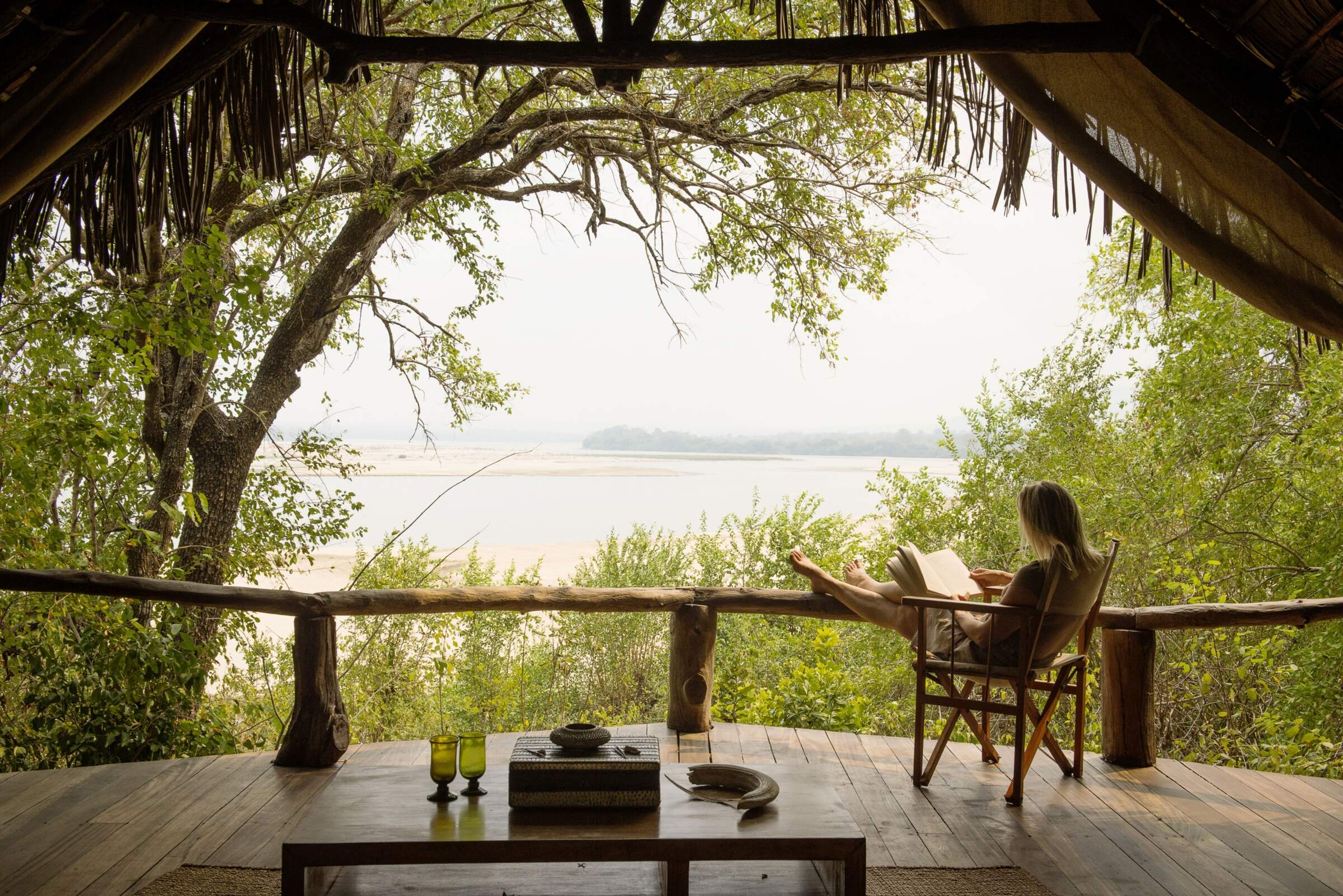
Sand Rivers Camp
The stylishly put together Sand Rivers has an outstanding reputation, with a wonderful location on the Rufiji River and great guides.
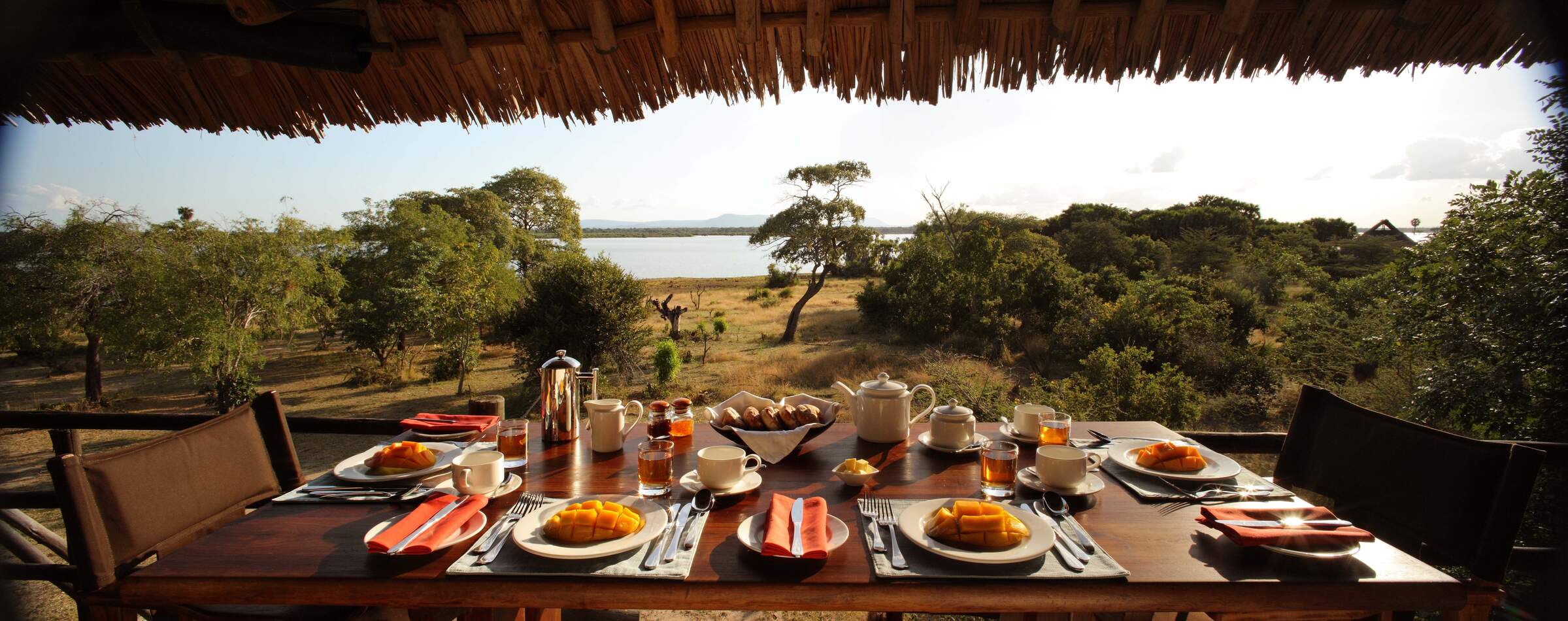
Siwandu
Siwandu is a luxurious and smoothly run camp with beautiful rooms and superb service offering great views over Lake Nzerakera.
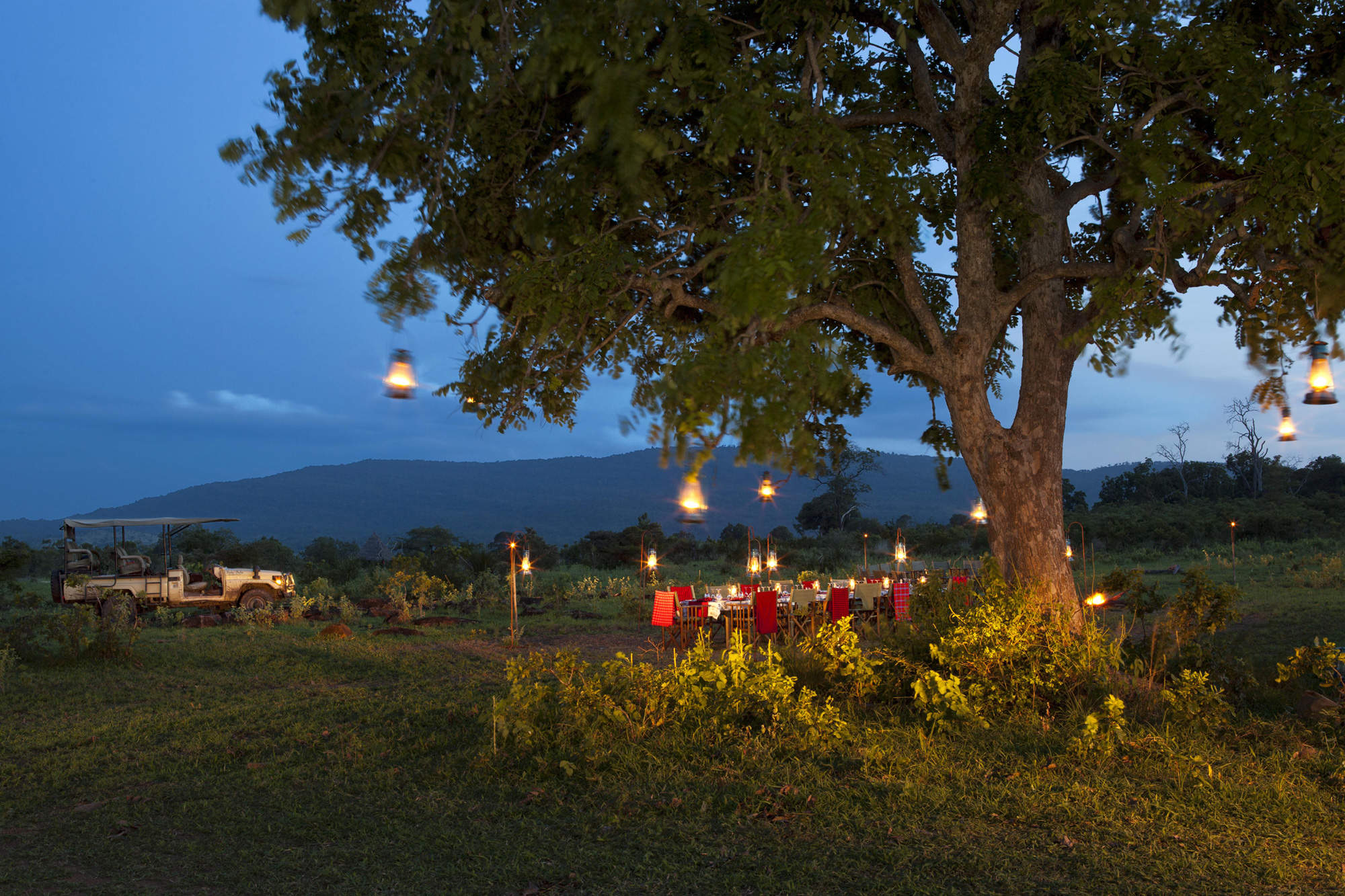
Beho Beho Tree-house
Beho Beho Treehouse is a satellite tree platform for just one couple, managed by Beho Beho and ideal as a one-night honeymoon retreat
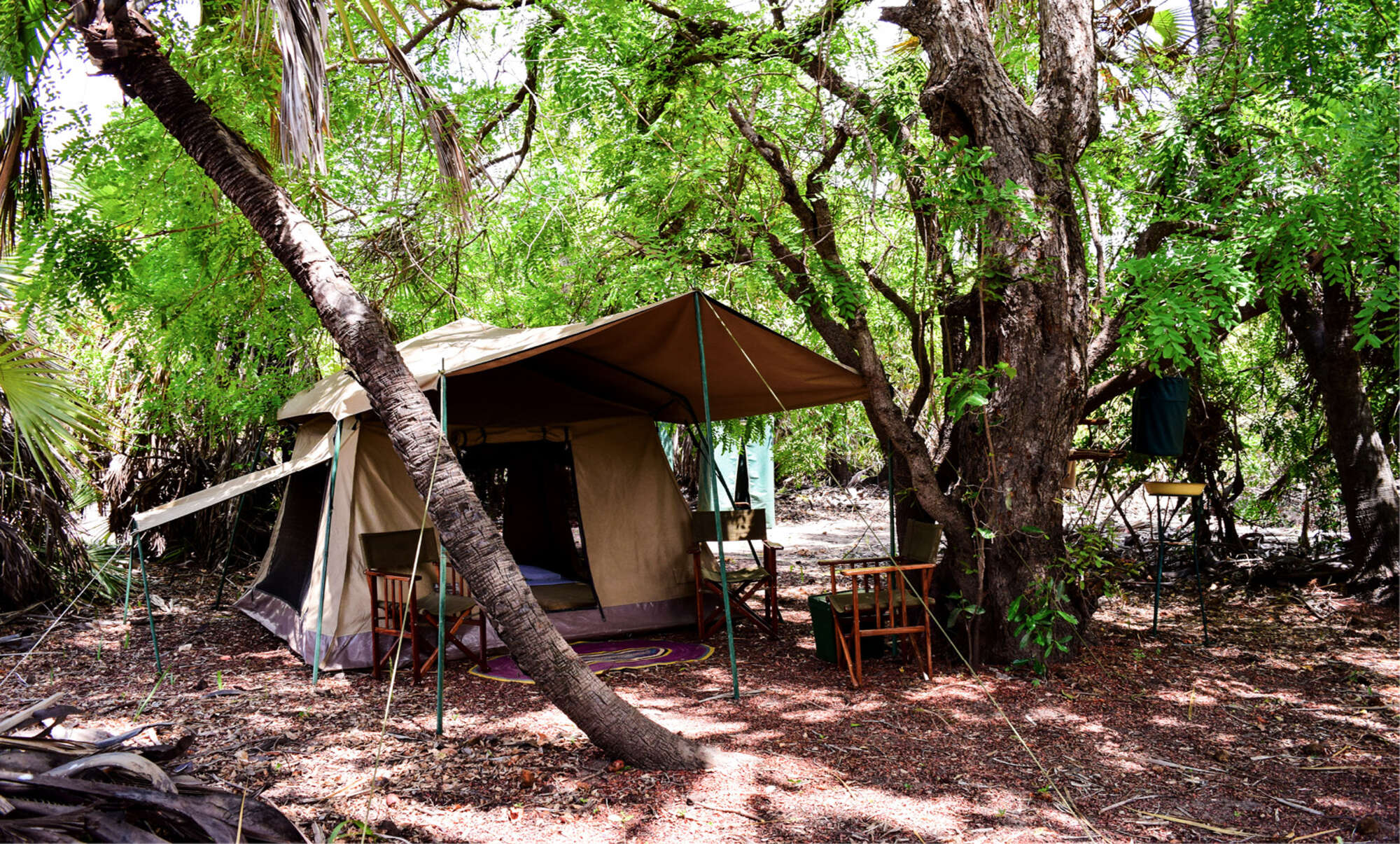
Impala fly-camping
While you're staying at Impala Camp in Nyerere National Park, you can enjoy a few nights' fly-camping in the heart of the bush.
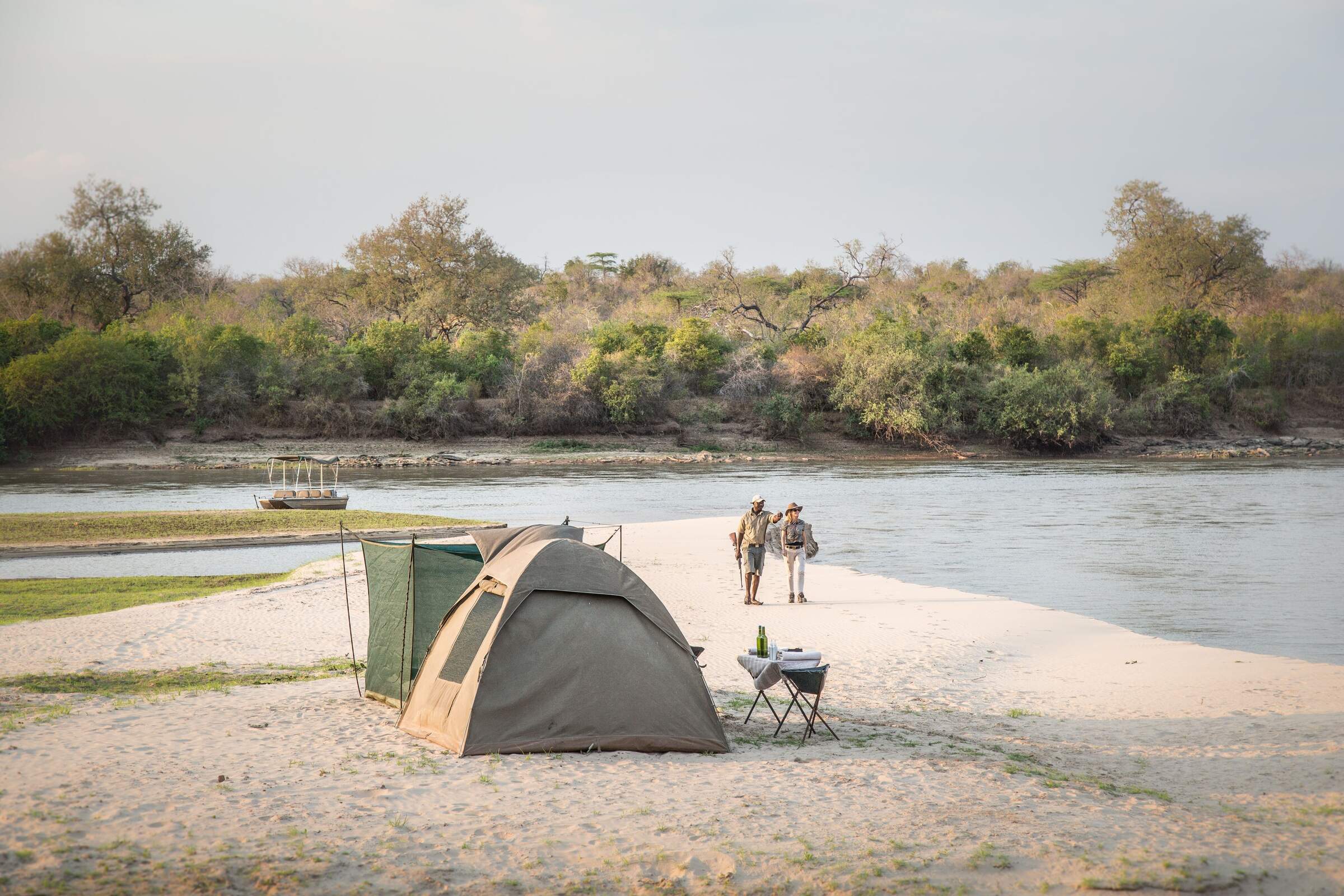
Sand Rivers fly-camp
Sand Rivers fly-camping safaris in Tanzania's Nyerere National Park operate out of Sand Rivers Camp, on the Rufiji River.
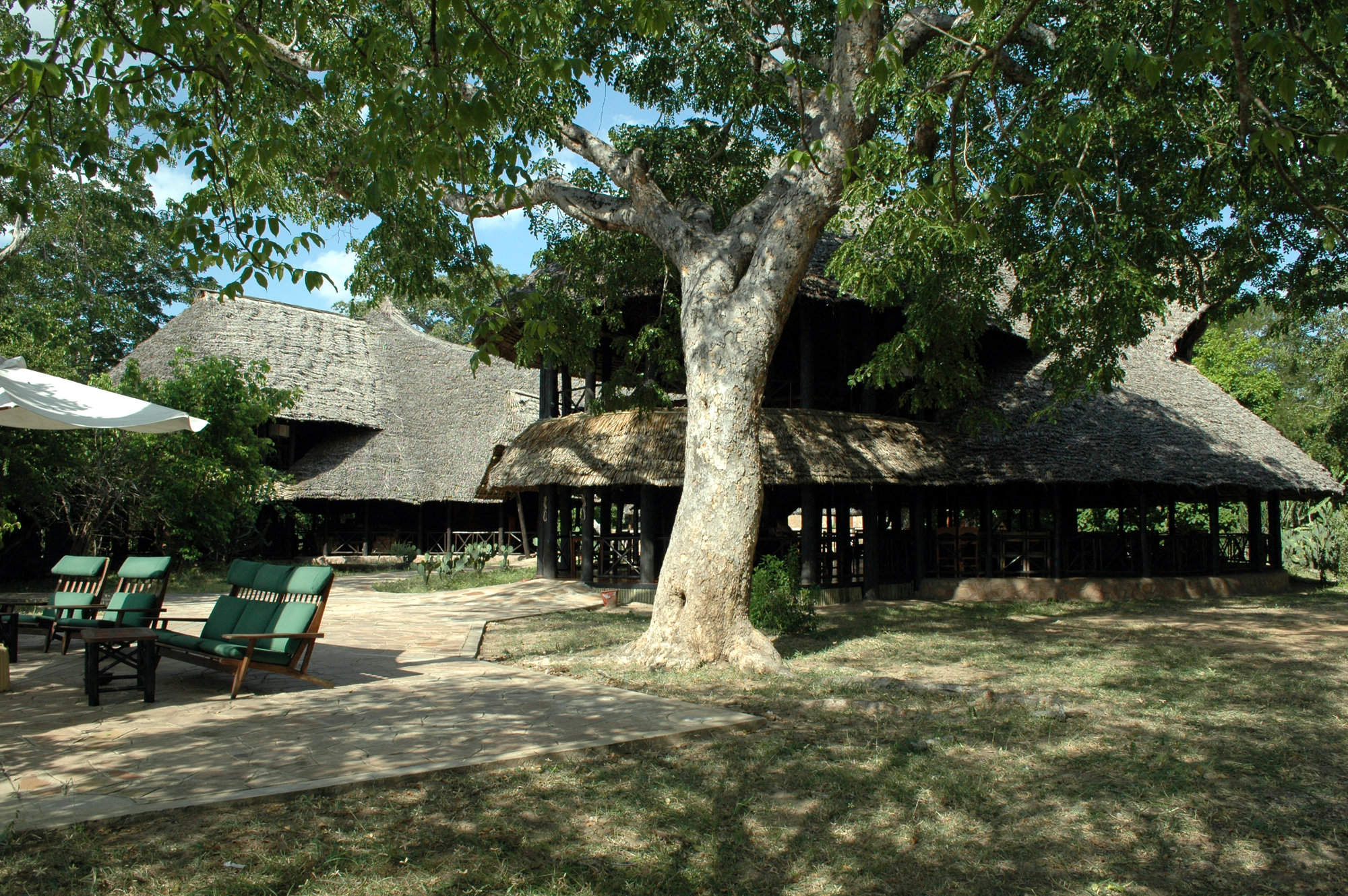
Rufiji River Camp
Rufiji River Camp has a lovely location right on the edge of the Rufiji River and while not luxurious, it is one of the lowest-cost camps in the park.
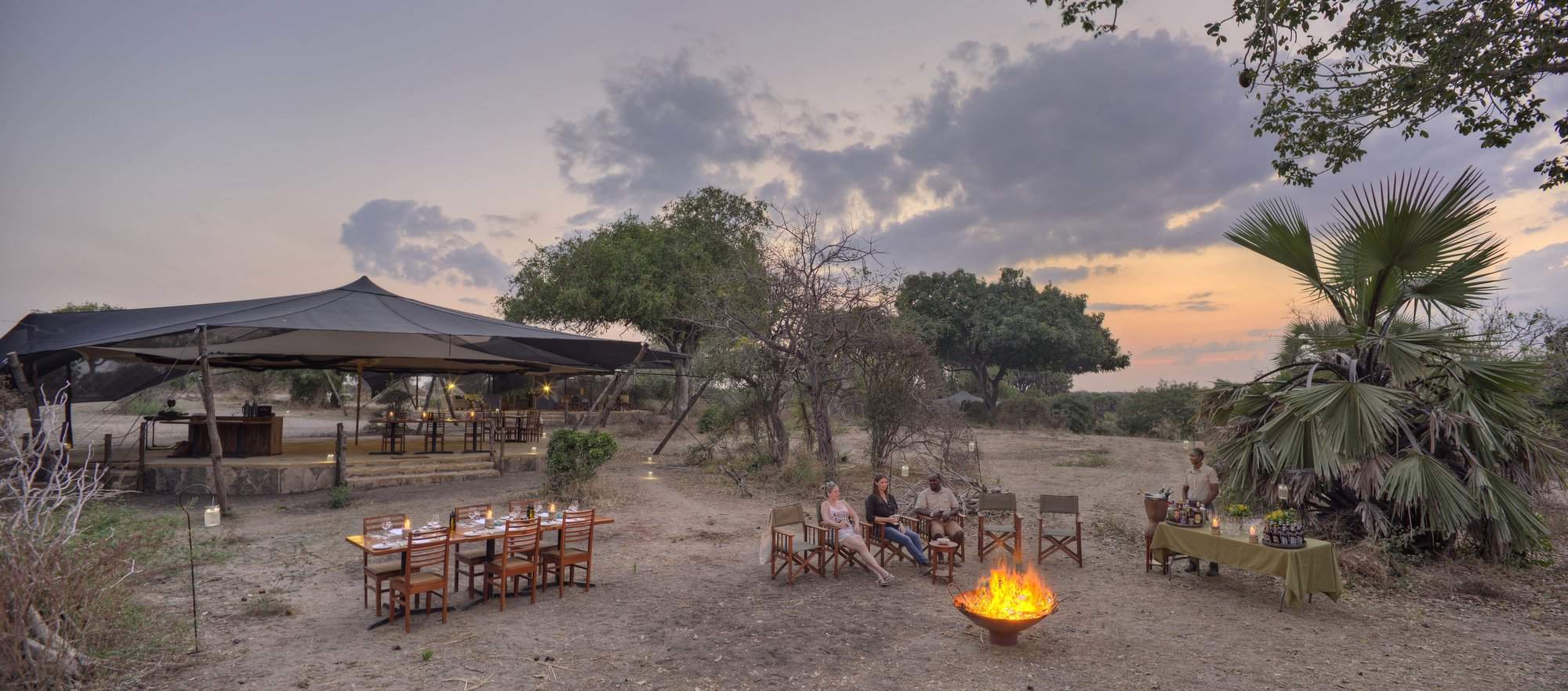
Roho ya Selous
Roho ya Selous is a smart tented camp on the west side of lake Nzerakera, close to the park’s best wildlife-viewing areas.
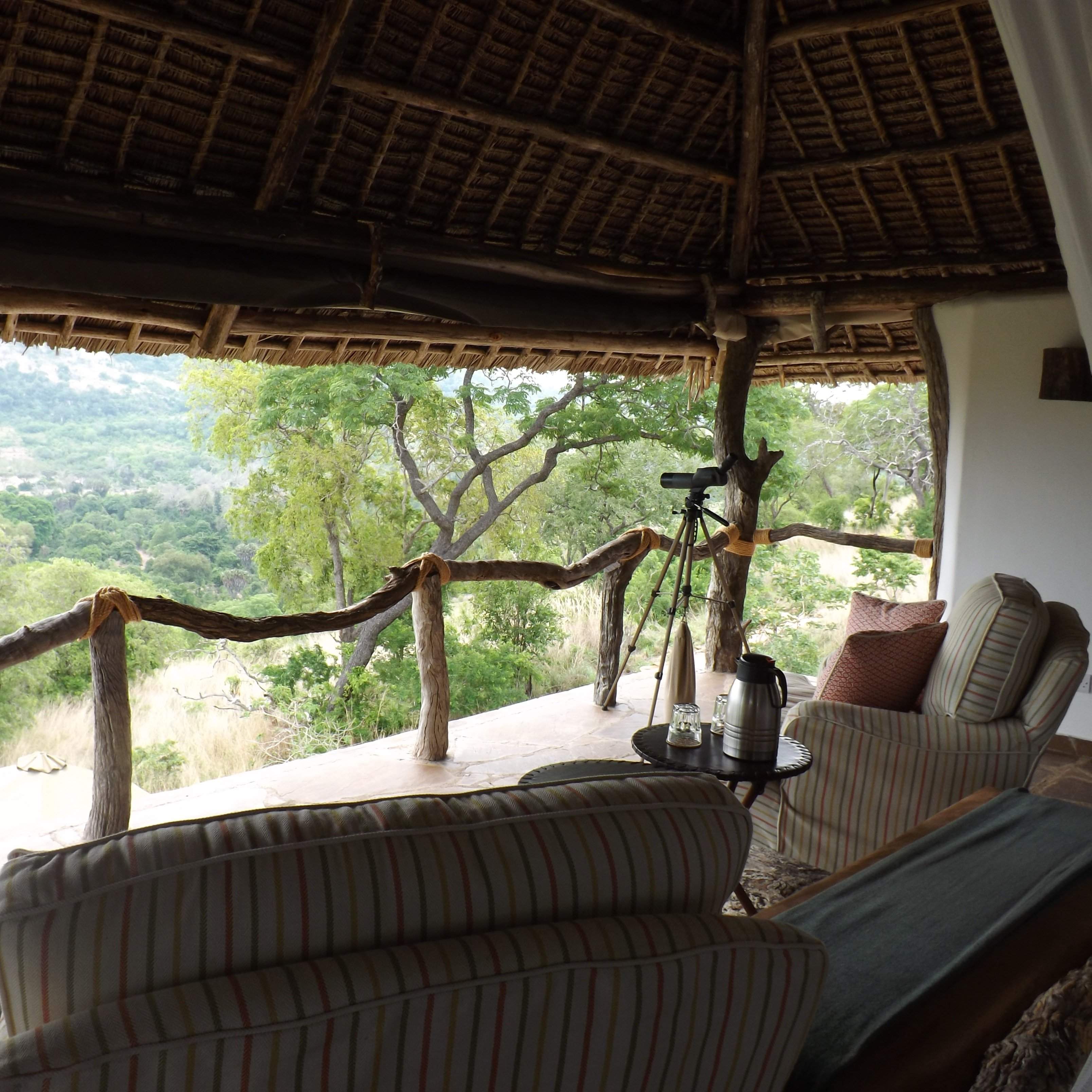
Beho Beho Bailey's Banda
Bailey's Banda at Beho Beho is a luxurious safari lodge in Nyerere National Park which can be booked exclusively for you and your party.
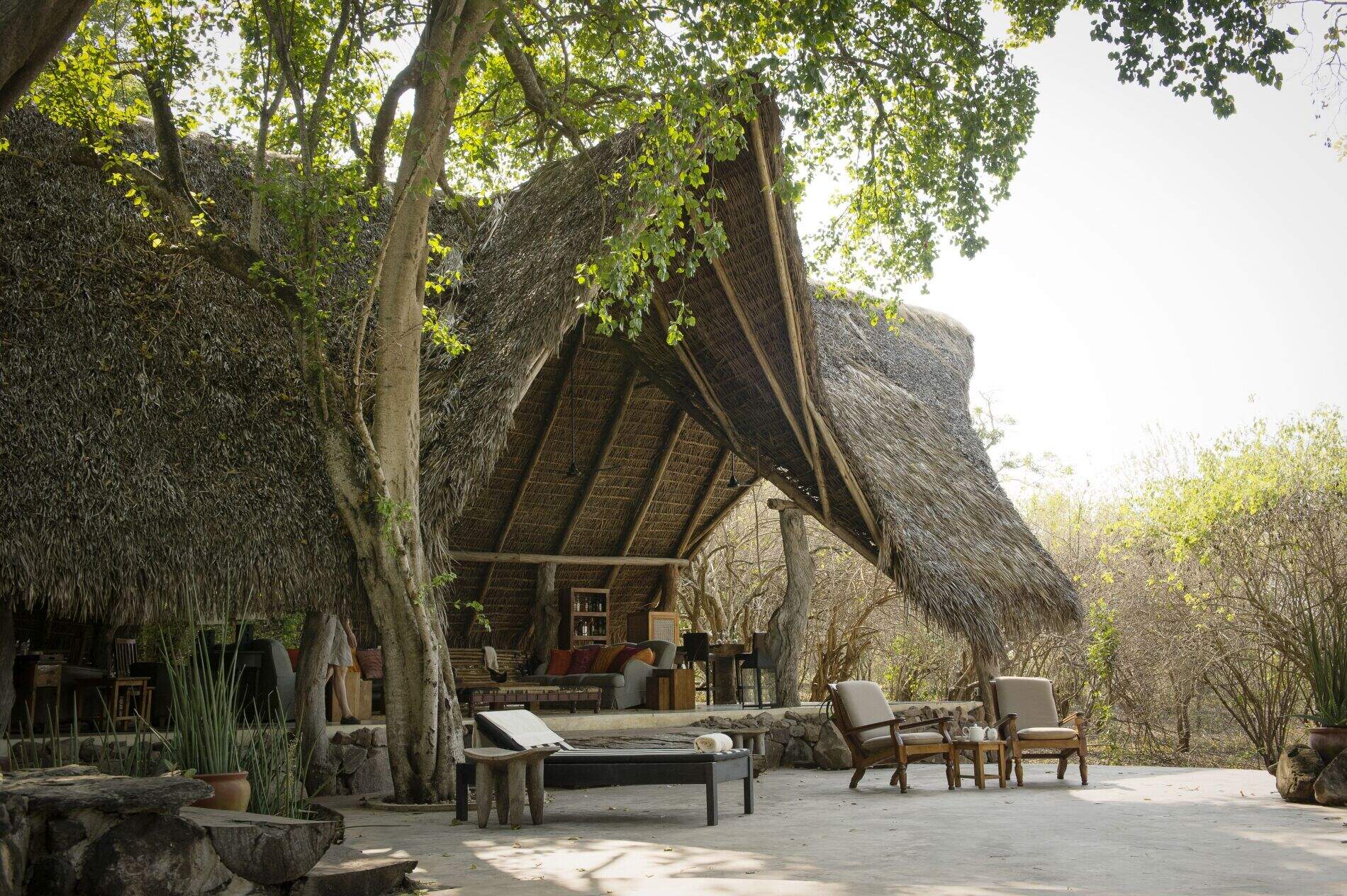
Kiba Point
Kiba Point is the private sister camp of Sand Rivers, available on an exclusive basis, with its own private drivers and staff.
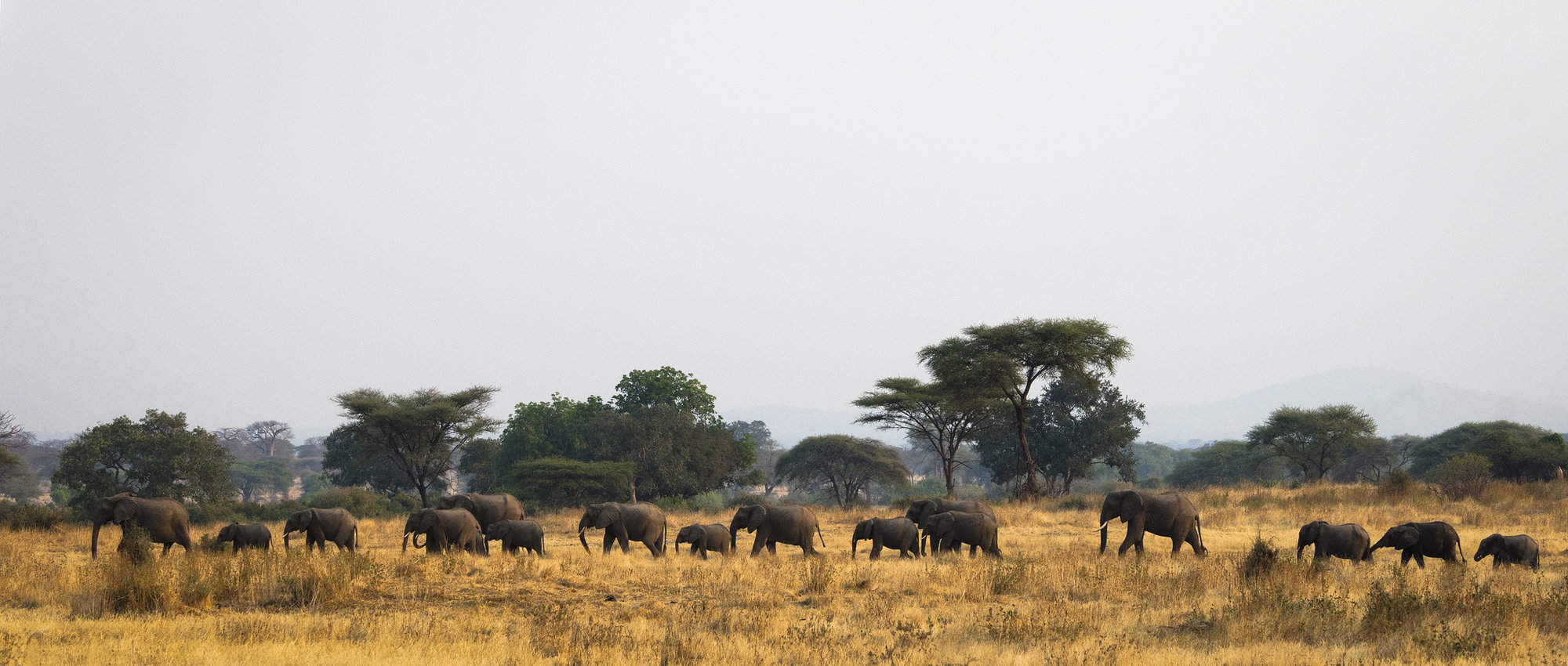
Rufiji River fly-camp
Fly-camping trips can be organised from Rufiji River Camp in Tanzania's Nyerere National Park
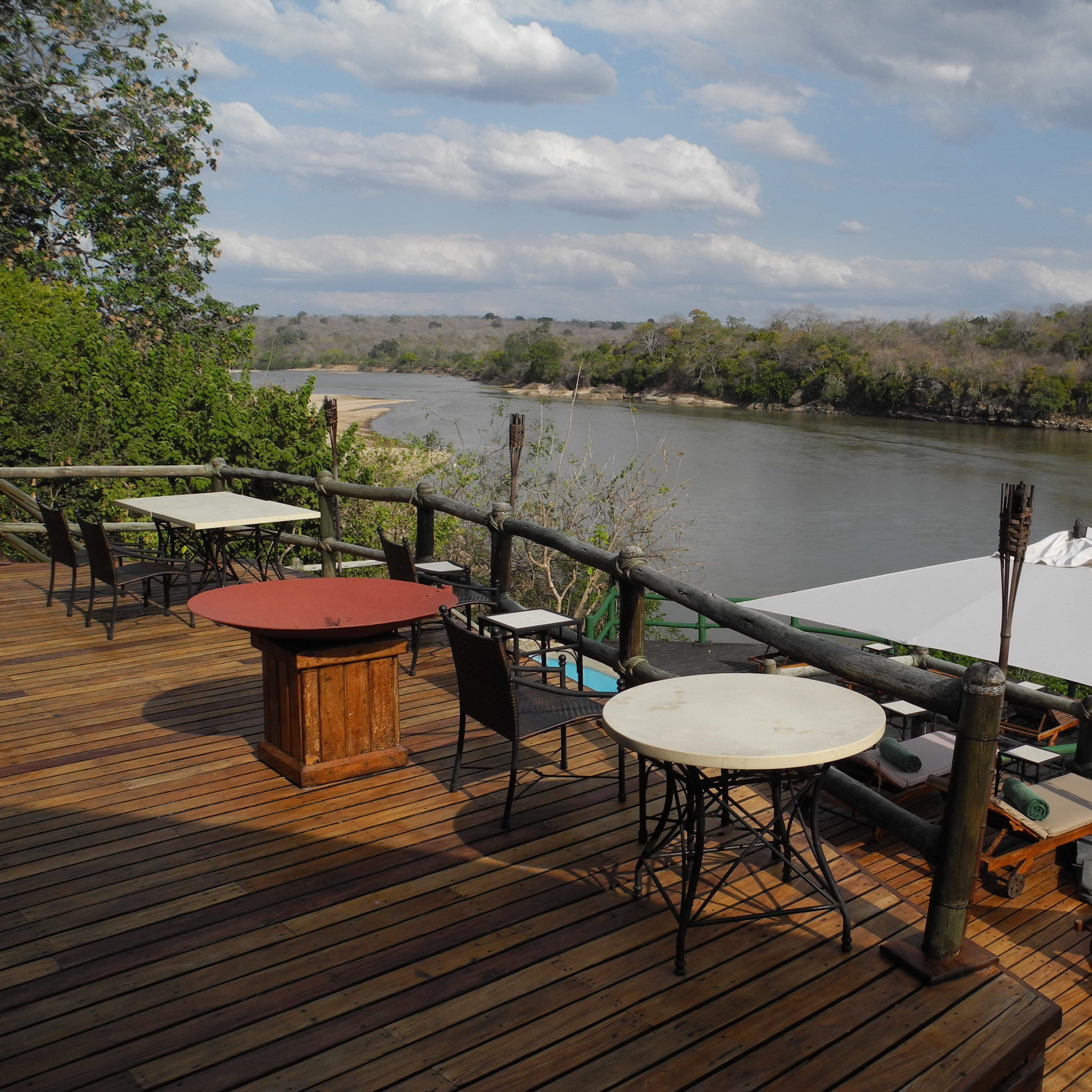
Mivumo River Lodge
Mivumo River Lodge is Serena's main lodge in the Selous. Although comfortable, the windows and air-conditioning dispel any wilderness feel.
When to go to Nyerere National Park
Our month by month guide: What it's like to visit Beho Beho in Nyerere National Park
Jan
Feb
Mar
Apr
May
Jun
Jul
Aug
Sep
Oct
Nov
Dec
Tanzania in January
January usually marks the start of the short dry season, although the exact timings of this are a little unpredictable. You can expect clear blue skies and sunshine, if the short rains have stopped, and the temperatures will be building. The short dry season is a little less pronounced in Southern Tanzania, and so it can still be wet in these areas. It is an interesting time for avians as resident birds go into breeding plumage and migrant species can be present.
Once the New Year busy period has quietened down, January can offer great value and quieter parks, although the weather can be variable, and in the Selous and Ruaha the wildlife is more dispersed.
- Variable weather: clear & dry or cloudy with some rain.
- Occasional thunderstorms may occur.
- A good time of year for birding as and many migrant species are around
- The wildebeest migration is gathering in the southern Serengeti.
- Busy in early January, quietening down through the month.
Our view
A good time to visit, with pros & cons
Weather in January
Tanzania in February
February is during the short dry season and is one of the hottest months in Tanzania, with temperatures reaching around 33°Celsius. This can be a good time to visit, as some areas of the Northern Circuit are comparatively quieter than during the European summer months, and lodge rates are also a little lower.
The wildebeest will typically be on the southern plains of the Serengeti for their calving season, which tends to occur in a 2-3 week window in early-mid February – although this does vary year on year. This is also a particularly rewarding time for birdlife, as northern hemisphere migrants join the resident species.
- Hot and dry weather.
- Wildebeest migration calving on Serengeti’s southern plains.
- Ngorongoro Crater and southern Serengeti busy for the migration.
- Selous and Ruaha are typically quiet at this time.
- The parks are likely to be lush and green, leading to pretty landscape
Our view
A very good time to visit
Weather in February
Tanzania in March
The heavier ‘long rains’ start in earnest in March although exactly when varies year on year. With no need to stay close to permanent water sources, migratory wildlife disperses, and so game viewing starts to become more challenging. This is most prominently seen in Tarangire National Park. The wildebeest migration may still be calving, or have moved on into the central regions of the Serengeti.
Many of the camps in the southern parks close mid March and mobile tented camps in the Serengeti will wind down towards the end of the month in order to move location or carry out refurbishments, ready for the new tourist season.
- Hot with building humidity, before the rains begin at some point.
- Wildlife viewing is variable depending on the start of the rains.
- Parks are quiet and rates are low.
- Not great for southern or western Tanzania.
- March can be a good time for birding, with many migrant species.
Our view
A good time to visit, with pros & cons
Weather in March
Tanzania in April
April is in the middle of the long rainy season and is the wettest month, with on average 250mm of rain. Temperatures are fairly high and humid in comparison to the rest of the year. Expect the bush to be lush and flowering, and alive with insects, birds and smaller animals. It is however also dense, allowing wildlife to hide, which in turn makes game viewing harder. This is a very quiet time in terms of visitor numbers.
Many of the tented camps are closed in April, however the larger lodges remain open. The rates are significantly cheaper, and so if you are willing to work harder to spot the bigger game, some accommodation bargains can be had.
- Heavy rain expected, with impressive thunderstorms and lightning.
- Many camps closed and roads impassable due to ground conditions.
- Rates are at their lowest all year round, with very few other tourists
- Places that are open are green and vibrant, wildlife more dispersed.
Our view
This is not a great time to visit
Weather in April
Tanzania in May
As Tanzania is close to the equator there is no dramatic difference in climate throughout the year, but temperatures do start to drop a little in May. The rains are likely to still be present, although potentially clearing towards the end of the month. Visitor numbers and lodge rates are still low. The wildebeest migration is making its way through the western regions of the Serengeti, crossing the Grumeti River.
Virtually all camps in southern Tanzania remain closed, and many of the roads and tracks in the Selous become impassable.
- Heavy rains and storms are likely, this can create some dramatic skies
- Blissfully quiet in northern Tanzania, and a good time to avoid crowds
- The parks are likely to look lush and green, with long grass.
- Wildlife is likely to be more dispersed, with fewer sightings.
- The low prices make safaris much more affordable at this time.
Our view
This is not a great time to visit
Weather in May
Tanzania in June
The rains come to an end at some point during the month and migratory wildlife begins to be drawn back to perennial water sources as the land starts to dry up. It’s likely that the parks will still be quite green and the grass high though, so walking and fly-camping may be unlikely. This marks the start of the season with camps reopening, but prices are still more affordable than the subsequent months.
The migration may still be in the Western Corridor, or on the move northwards towards the Mara River. Western Tanzania presents more challenging conditions for chimpanzee trekking in Mahale National Park, as the chimps are higher in the mountains.
- Variable weather: clear & dry or cloudy with some rain.
- A transitory time for the migration – moving from west to north.
- The parks may still be quite green, and grasses high.
- Wildlife may be dispersed still.
- Relatively low visitor numbers and good value, shoulder season prices.
Our view
A good time to visit, with pros & cons
Weather in June
Tanzania in July
July is considered to be the start of the peak season, with no rainfall expected and pleasant daytime temperatures. As the parks dry, the wildlife congregates in fewer areas, grass is eaten and trampled by the migration, and game viewing gets better and better. The wildebeest are typically arriving in the northern Serengeti, ready to begin their period of crossings of the Mara River.
In the Selous and Ruaha wildlife sightings can be fantastic, with animals gathering around the lakes and rivers. Great conditions and school holidays mean the parks are at their busiest, with Ngorongoro and the Serengeti particularly crowded.
- Dry and warm daytimes, chilly and windy in the mornings and evenings.
- Great wildlife viewing, as water sources diminish.
- The most popular time of year with very high visitor numbers.
- Prices are at their highest due to the great conditions on the ground.
- To avoid the crowds consider Tanzania’s southern parks.
Our view
Fantastic: the very best time to visit
Weather in July
Tanzania in August
August is the middle of the long dry season, with clear skies and sunny weather. You can expect some cooler weather at night and first thing in the morning. Remember to pack layered clothing, so you can wrap up warm on your early morning game drives, but remain comfortable as it heats up throughout the day.
August is a very popular time to visit, so accommodation prices are at their highest and advanced booking is necessary. It can get noticeably busier in some of the northern parks – in particular the Ngorongoro Crater and northern Serengeti, as visitors flock to the area in hope of witnessing an exciting migration river crossing.
- Dry and warm daytimes, chilly in the early mornings and evenings.
- General wildlife viewing should be excellent.
- An exciting time of year for the wildebeest migration.
- Certain areas will be very busy and camps fill up fast.
- Great wildlife sightings in the Selous and Ruaha, and fewer people.
Our view
Fantastic: the very best time to visit
Weather in August
Tanzania in September
September can be an excellent time of year to visit Tanzania. As the parks continue to dry up the wildlife becomes increasingly reliant on the remaining water sources, leading to high densities of animals. Whilst early September can be busy, with fewer families traveling at this time the parks typically become quieter as the month goes on.
You are still likely to see the wildebeest migration in the northern Serengeti, with river crossings occurring on a regular basis. Tanzania’s southern parks are also fantastic at this time of year, generally receiving far fewer visitors than the north, and wildlife sightings can be great. Prices remain high and the weather generally remains good.
- Wildlife viewing in September can be fantastic.
- Whilst still fairly busy, often the parks are typically a little quiet
- The parks will start to become very dry, with little new vegetation
- Cooler mornings and evenings, warming up during the day.
- Prices remain high.
Our view
Fantastic: the very best time to visit
Weather in September
Tanzania in October
At the tail end of the dry season, the wildlife should be the easiest to spot, although photographers should be aware that it can be a bit dusty at this time of year, as there has been no rain for several months. Great general wildlife viewing throughout as animals are attracted to remaining sources of water. Elephant numbers are particularly high at this time in Tarangire, and Mahale and Katavi are especially rewarding with frequent wildlife sightings close to camp.
There is a chance of rainfall towards the end of the month, if the short rains commence. While prices remain high, visitors numbers are significantly lower than in July-August.
- Mostly dry and temperatures comfortably warm, with the chance of storm
- Great game viewing although the landscape can be a bit barren.
- Much lower visitor numbers than the earlier months.
Our view
A very good time to visit
Weather in October
Tanzania in November
In November you can expect the start of the short rains, although the start date varies every year. The rains are highly localised, and are much lighter and more unpredictable than the long rains that occur earlier in the year. These should not really interfere with your safari – as the game viewing at this time is still good - but you should pack a waterproof jacket and be prepared for some short rain showers!
The majority of tented camps remain open, but some of the mobile camps in Northern Tanzania will close for the latter half on the month. Given the seasonality, camps are charging shoulder season rates so there are often some bargains to be had. Early November can offer great value for money and the weather conditions are likely to be comparable to late October.
- Variable weather: clear & dry or cloudy with some rain.
- Parks are comparatively quiet and prices at the lower end.
- Some camps will close towards the end of the month for maintenance.
- Good wildlife sightings, but animals will disperse when rain starts
- The wildebeest migration is on the move and the location unpredictable
Our view
A good time to visit, with pros & cons
Weather in November
Tanzania in December
December is also during the short rainy period, but this does not stop Tanzania being a popular destination to spend the festive period. Be aware that many of the lodges book up early, and charge peak rates over this time. Advanced booking is essential over this period, especially if travelling in larger family groups.
Travelling in December outside of the festive period allows travellers to make use of excellent shoulder season rates. Temperatures are pleasant with the averages of 27Celsius, although there is the chance of intermittent thunderstorms.
- Variable weather:clear & dry or cloudy with some rain and thunderstorm
- Good general game viewing in parks with low seasonality - Serengeti.
- Very quiet early in the month, becoming exceptionally busy.
- Prices reflect this – great value rising to the highest they are.
- The wildlife in southern Tanzania is more dispersed.
Our view
A good time to visit, with pros & cons
Weather in December

Looking for inspiration on where to travel next?
Visit our trip chooser to explore your options and find inspiration for your perfect African adventure
Inspire me